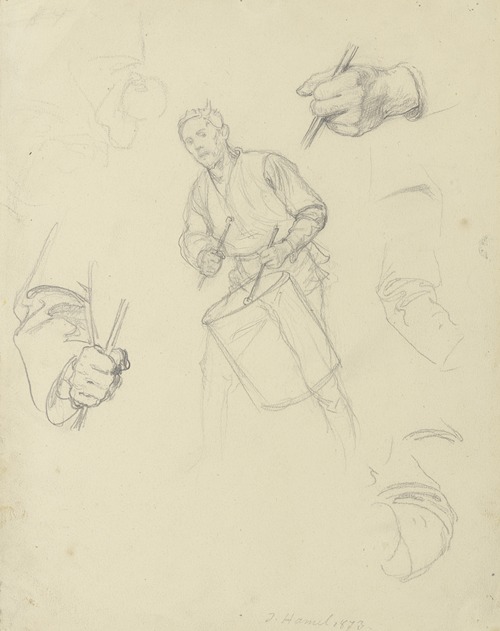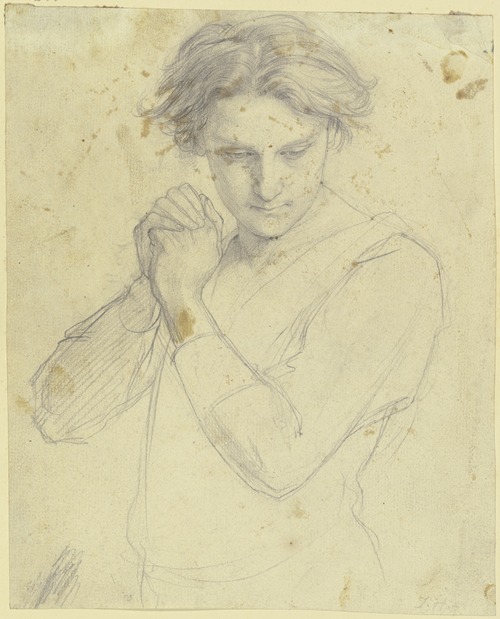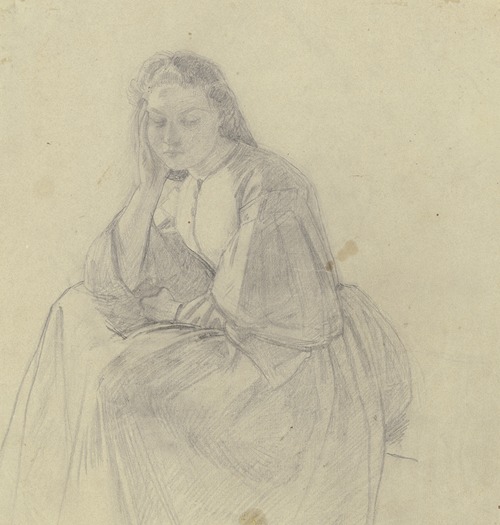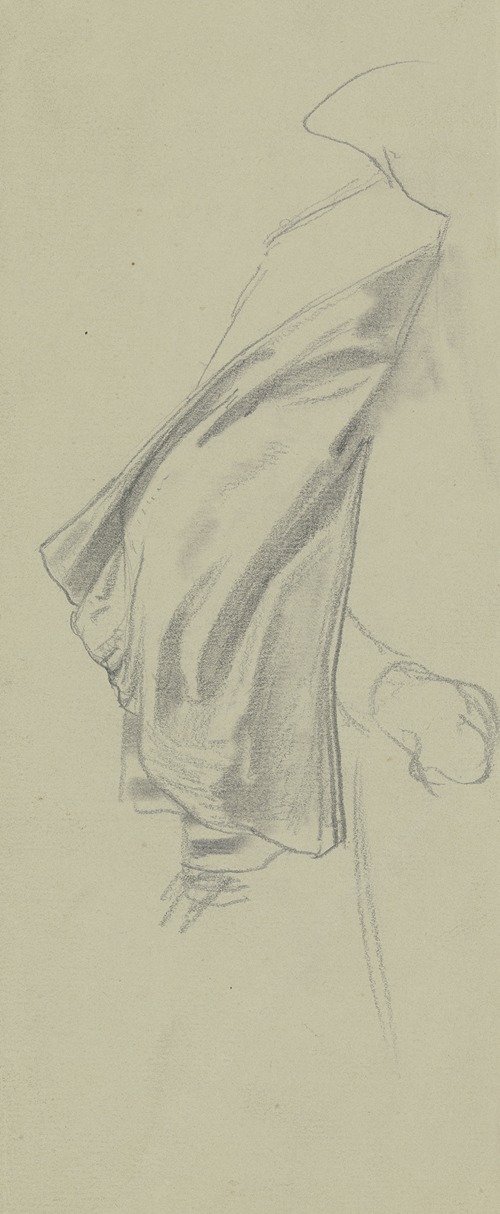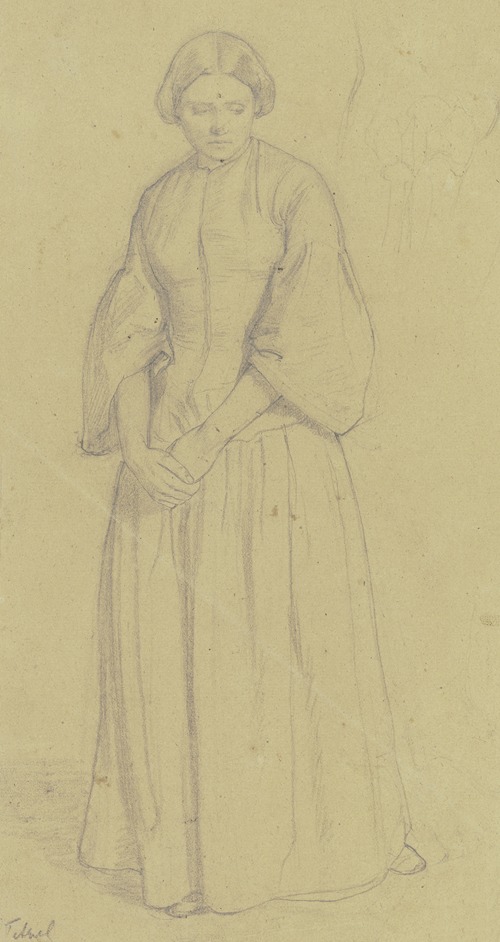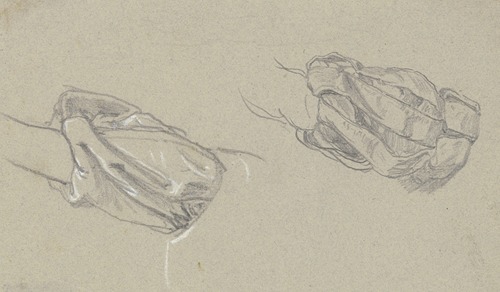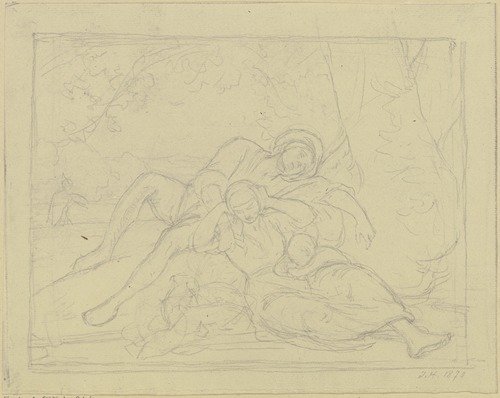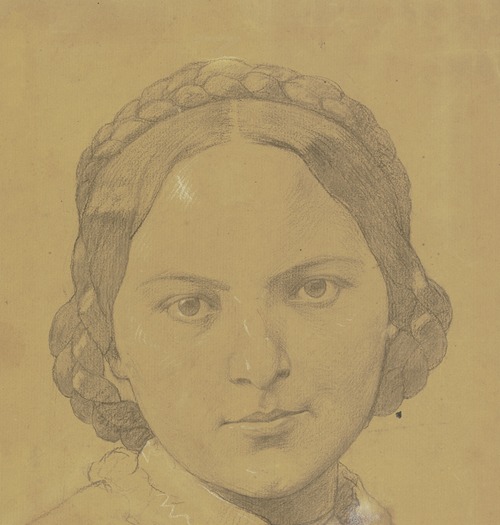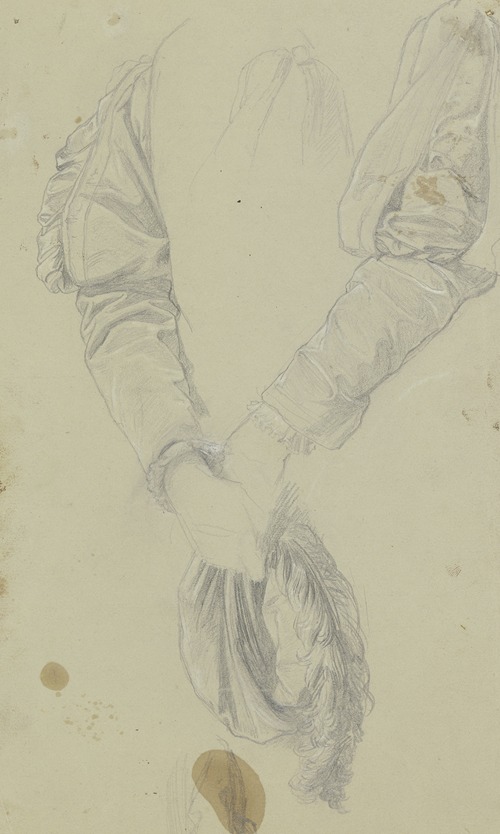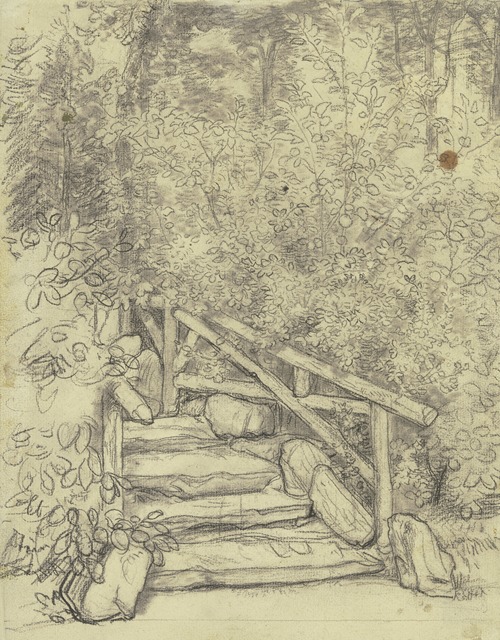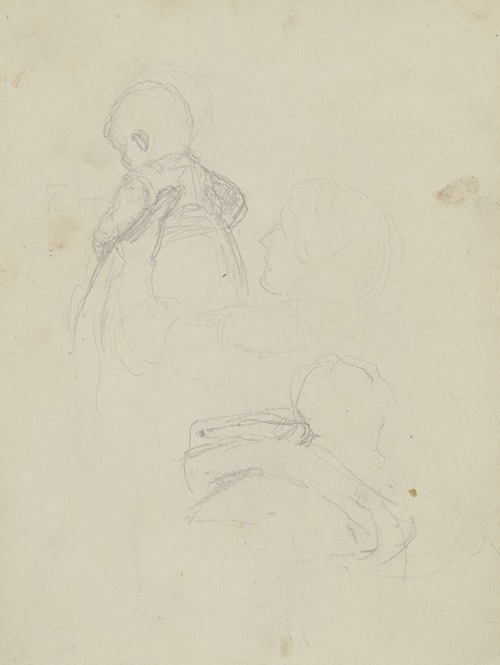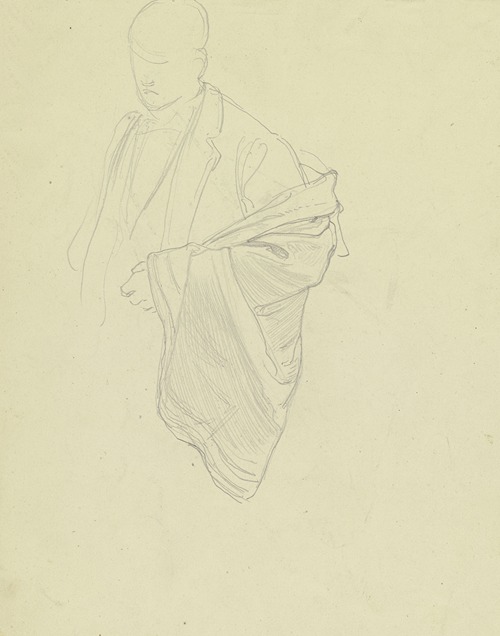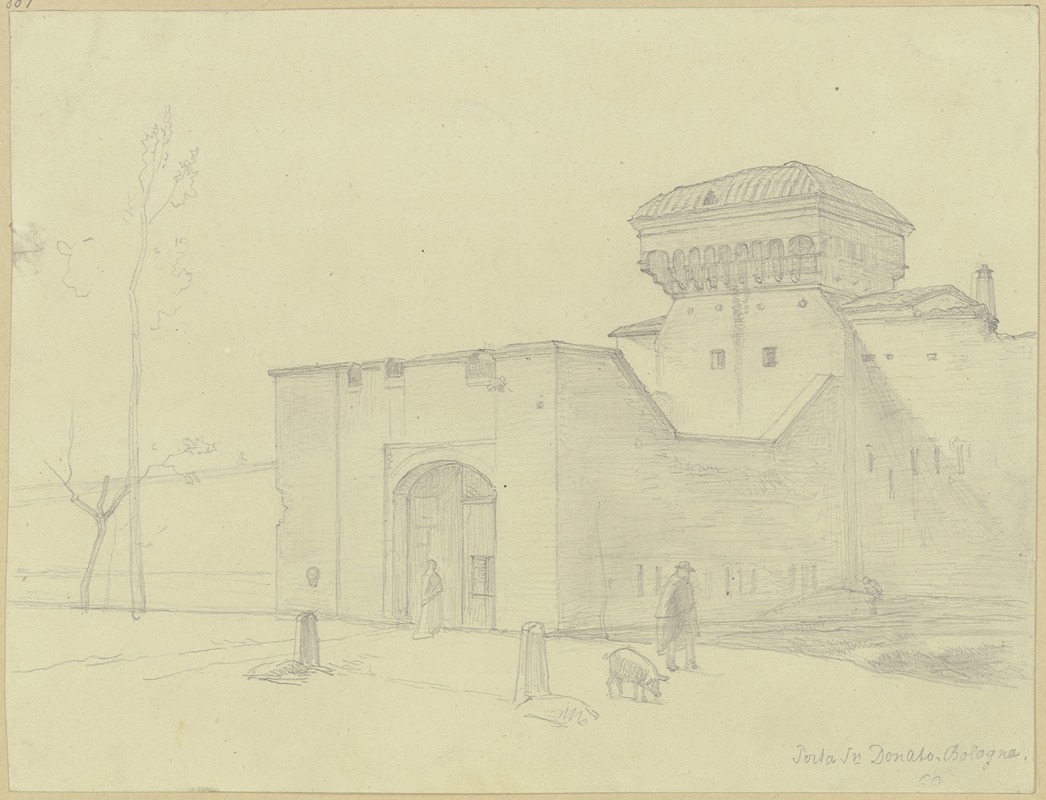
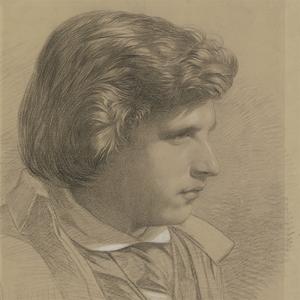
Julius Hamel was a German portrait, history and genre painter as well as draughtsman, lithographer and graphic artist.
Julius Hamel, the son of a saddler, came to Frankfurt am Main in 1849 after an apprenticeship with a lithographer in Dillenburg, where he attended the Städelsche Kunstinstitut as a pupil of Jakob Becker, Edward Steinle and Johann David Passavant. He traveled to Dresden, Munich, Belgium and Holland (1866) for further training. Together with Albert Hendschel, he spent 1869/1870 in Italy, where he was inducted into the German Artists' Association in Rome in January 1870. Through his marriage, he became the son-in-law of the Frankfurt architect and writer Friedrich Maximilian Hessemer. He lived in Frankfurt am Main until his death. There he was a member of the Frankfurt Artists' Society, and at times also its board.
Hamel created portraits, such as a portrait of Arthur Schopenhauer commissioned by a Berlin admirer in 1856, in which Schopenhauer saw himself as "frighteningly similar" and "excellently painted", but portrayed as a "limited village schoolboy", whereupon the client refused to accept the painting from the painter, while other contemporaries noted the quality of the portrait. Hamel created several more Schopenhauer portraits until 1901. As a history painter, he completed the painting The Arrest of Count Egmont by the Duke of Alba on September 9, 1567 in 1876 and The Laying of the Foundation Stone during the Conversion of Goethe's Parents' House in 1755 in 1898.

